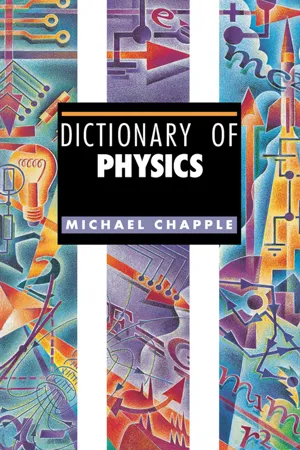![]()
E
eddy currents are induced currents in metallic supporting parts of electrical machinery such as motors or transformers. These metal parts either rotate at speed in a magnetic field or stand in a rapidly changing magnetic field. The induced e.m.f.s set up in the conductor drive current loops known as eddy currents through the metal. These current loops will, unless they are diminished by good design, represent a serious energy loss. In the case of transformer cores, eddy current loss is reduced by constructing the cores from thin steel sheets insulated from one another.
efficiency (heat engine) is defined as follows:
where η is the efficiency of the heat engine, Wis the work done by the engine in one complete cycle and Q1 is the heat taken in from the source in one complete cycle. This equation is a definition and true for any heat engine.
For an engine working with maximum efficiency, one, that is, which neither works against friction nor allows heat to slip across a temperature gradient fruitlessly, the equation can be extended:
where Q2 is the heat released from the engine to the sink and T1 and T2 are the absolute temperatures of the source and sink respectively. (In fact, this equation defines the absolute thermodynamic temperature scale, but that is another matter.) This equation shows that high efficiency is obtained by ensuring a large temperature difference between source and sink. The efficiency is sometimes given as a percentage instead of as a decimal fraction.
efficiency (machines): the ratio of the useful work done by a machine (such as a pulley system) on a load (such as a weight) to the work done on the machine by the effort force. It is usually expressed as a percentage.
This definition can then be shown to be identical to the expression:
where
If a system of levers or a pulley system has an efficiency of 80%, the implication is that about a fifth of any effort applied to the system is expended working against friction. People selling quality pulley systems for boats and other purposes assume an efficiency of about 70% as a rule of thumb when choosing a pulley system.
efficiency (thermal power station) is the ratio of the electrical energy reaching the consumer from the thermal power station to the internal energy released when the primary fuel burns. The main losses are:
• energy released in the furnaces that is not carried to the turbines by the steam
• inefficiency in the conversion of energy carried in the steam into electrical power
• power losses during transmission of the electrical power.
Einstein’s photoelectric equation: see photoelectric effect.
elastic collision: a collision in which kinetic energy is conserved. If a collision obeys a different constraint, such as the two bodies sticking together on contact, then the collision cannot be elastic. The law of conservation of linear momentum is always obeyed.
elastic limit: the maximum stress that can be applied to an elastic specimen without causing a permanent change in the dimensions of the specimen. (See stress-strain curves.)
elastic strain energy is the energy stored in a material under stress. If the stress is tensile in nature then the energy stored equals ½Fx where F is the tensile force applied to the specimen and x is the extension of the specimen. (See force–extension curves.)
elasticity is the ability of a material to recover its original shape or size once a deforming stress has been removed. (See stress–strain curves, plasticity.)
electric charge is a fundamental property of matter. Amount of electric charge is defined by the word equation:
electric charge = electric current × time
The ampere and the second are base units. The same word equation defines the SI unit of electric charge, the coulomb:
coulomb = ampere × second
(See Coulomb’s law, electric field.)
electric charge and electric current are related physical quantities; electric current is the rate of flow of electric charge. Initially electric charge was studied in the static condition, distributed across the surface of a charged body. When different objects were charged by friction it was soon realized that there were two kinds of charge, now labeled positive and negative, and that like charges repel while unlike charges attract. At a later stage it was discovered that matter itself is electrical; atoms consist of negative electrons in their outer regions shielding positive nuclei at their centers.
An analysis of the forces between charged bodies led to the concepts of electric field, electric field strength and electric potential. Experiments with charged bodies led to the distinction between conductors and insulators and to the concept of capacitance.
Later still, simple electric cells were discovered. Experiments involving the rapid and repetitive charging and discharging of conductors established that electric current is flow of electric charge. The discovery of the first law of thermodynamics and energy conservation led to the definition of the volt, a stronger interpretation of electric potential and to the analysis of energy transformations in electric circuits. The final steps were the discovery of the electromagnetic spectrum and then the laws of relativity.
The relationship between electric charge and electric current in a wire is summarized in the equation:
where I is the current, n is the number of charge carriers per unit volume of wire, A is the area of cross-section of the wire, υ is the average speed of the charge carriers (called drift speed) and q is the charge on the carriers.
For a beam of electrons, this equation becomes:
I = nev
where e is the electronic charge and n is now the number of electrons per unit length of beam. Both equations follow immediately from the definition of current as the rate of flow of charge. (See also thermodynamics (first law of).)
electric circuit: a complete loop of conducting material that includes a current source and a current detector. The current detector need be no more than a device that detects the magn...







